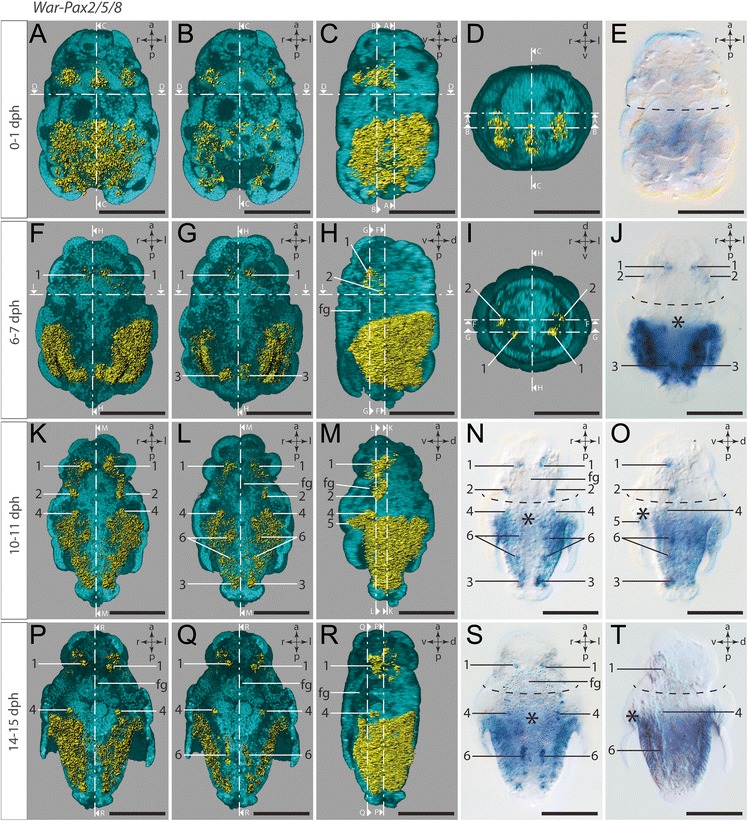Fig. 6.

Expression of War-Pax2/5/8. Anterior faces up in all panels except for the anterior views in (d) and (i). Dorsal (d)–ventral (v), left (l)–right (r), and anterior (a)–posterior (p) axes indicate the orientation. First, second, and third column as well as (d) and (i) are 3D-rendered images based on autofluorescence signal (turquoise) and reflection signal of War-Pax2/5/8 expression staining (yellow). The ventral half of the larvae in the first and second column was omitted in order to visualize the location of the ventral gene expression signal. The lateral left larval hemisphere in images of the third column was omitted in order to enable the lateral view of the gene expression signal. Clipping plane projections of the respective panels are indicated by dotted white lines. (n), (s), and fourth column are light micrographs. Location of the prototroch is indicated by dashed black lines and the location of the mouth opening is indicated by an asterisk. Numbers mark distinguishable expression domains. a Ventral view. b Ventral view with most ventrally located expression omitted. c Lateral left view. d Anterior view. e Ventral view. f Ventral view. g Ventral view with most ventrally located expression omitted. h Lateral left view. i Anterior view. j Ventral view. Note the strong expression of War-Pax2/5/8 in the epidermal cell layer of the outgrowing trunk. k Ventral view. l Ventral view with most ventrally located expression omitted. m Lateral left view. n Ventral view. o Lateral left view. p Ventral view. q Ventral view with most ventrally located expression omitted. Note the expression in the epidermal cell layer of the trunk, in cells of the developing CNS (#1, #6), and in the region where the protonephridia develop (#4). r Lateral left view. s Ventral view. t Lateral left view. Abbreviation: foregut (fg). Scale bar: 50 μm
